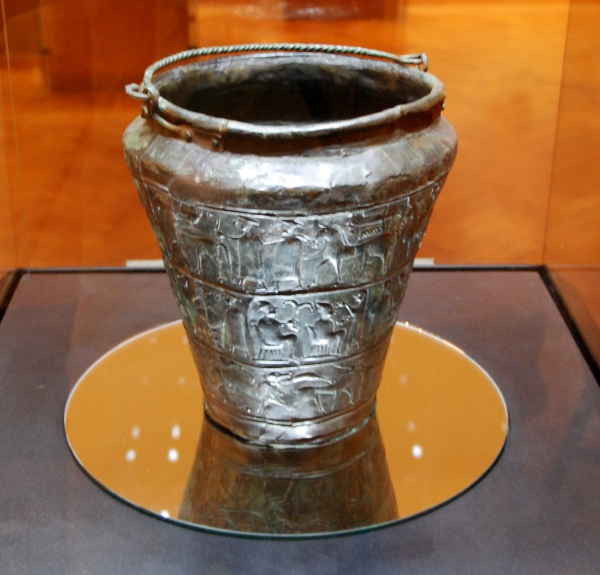Facts About Vače Situla
The Vače Situla is a beautifully decorated bronze vessel from the Early Iron Age, discovered in the 19th century at the Hallstatt Archaeological Site in Vače, Slovenia. Dating back to the 5th century BC, this artifact is one of the oldest situlas associated with the northern Illyrians in the Eastern Hallstatt zone. The vessel is adorned with three rows of reliefs that illustrate scenes from the daily life of the ruling class and their religious practices. It is currently on display at the National Museum of Slovenia.
The situla was unearthed in 1882 by Janez Grilc, at a depth of 1.5 meters. It is crafted from three separate bronze sheets, joined together with bronze rivets, and features a handle made of twisted wire terminating in duck heads. The vessel, created using the toreutic technique, may have been used to hold holy water and has a capacity of about 2 liters.
The detailed reliefs on the situla are divided into three horizontal bands. The top row depicts a procession of warriors; the middle row shows scenes of sacrifice, celebration, and ritual wrestling; while the bottom row features various animals. These intricate designs reflect the influence of Etruscan art.
The figures from the Vače Situla are so iconic that they are featured in the design of the Slovenian passport. Additionally, a bronze replica of the situla stands at the beginning of the Vače archaeological trail, which guides visitors through other significant sites, including Iron Age cemeteries and former settlement areas. Tours of the trail are brought to life by a local family theater group from Vače, making the experience both educational and entertaining.

 Austria
Austria